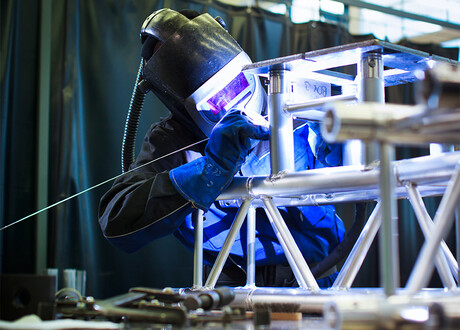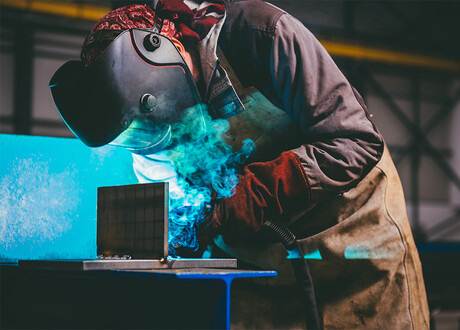The Dutch Labour Inspectorate has started strict inspections on welding fumes
Even if you're based in North America, now’s a good time to make sure your fume control measures still meet today’s safety standards – and Plymovent is here to help.


Welding fume extraction is essential to protect workers and maintain a clean environment. Source capture—extracting fumes directly at the point of welding—is always the most efficient and safest method. On top of that, various additional measures can help reduce fumes and lower exposure risks.
There are many systems that help remove welding shop fumes, such as downdraft tables, extraction arms and hoods, filter systems, fans, or systems that control the background concentration of welding fumes in the workshop. In this article, we explore different ways to reduce the risks associated with welding fumes.
Changing how and where welding tasks are performed is one of the simplest ways to reduce exposure:
Depending on the task, there are many ways to reduce the amount of welding needed—and with it, the amount of fume generated:
Production methods can also help minimize exposure:

Some welding processes naturally produce fewer fumes:
Resistance welding is another low-fume alternative. For example, in shipbuilding, fairing brackets can be attached with stud welding instead of manual arc welding, reducing both fume generation and cleanup time.
Using the right shielding gas mixture can significantly reduce fume levels:
Shielding gas optimization is a quick win that improves weld quality and lowers overall fume exposure.
Welding fume extraction is the process of capturing and removing harmful fumes directly at the source. It protects welders from breathing in toxic metal particles and helps remove welding shop fumes from the workspace, improving overall air quality and safety.
To limit fume exposure:
Use local exhaust ventilation (LEV) like source extraction arms.
Choose low-fume welding methods such as TIG or MIG brazing.
Improve general ventilation in the shop.
Position work to keep fumes out of the breathing zone.
In the U.S. and Canada, employers must control exposure to welding fumes under workplace health and safety laws. If welding fume extraction at the source is technically feasible, it’s often mandatory.
Check guidelines for your country:
USA (OSHA): Welding, Cutting and Brazing Standards
Canada (CCOHS): Welding - Fume Extraction
Yes. In most countries, if source extraction is technically possible, it’s legally required. It's the most effective way to remove welding shop fumes and protect worker health.
Use mobile welding fume extraction units with flexible arms. These systems are designed to work in tight or enclosed spaces and allow precise fume capture without obstructing movement.
Install welding fume extraction systems at every weld station.
Use certified filters and ventilation.
Train workers on proper use.
Monitor air quality regularly.
Document all safety procedures and maintenance.
We're happy to help!
We're happy to help!